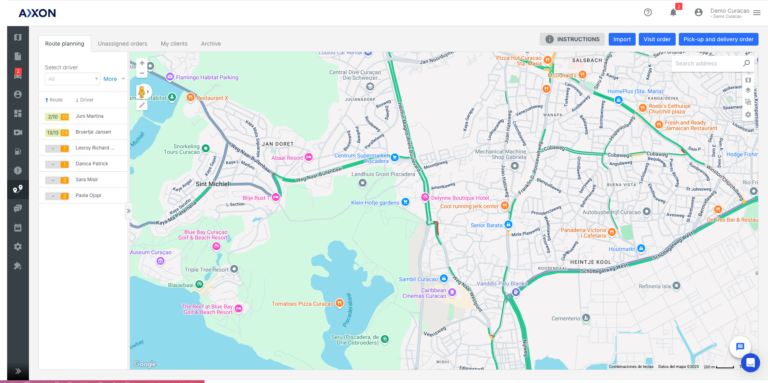A Comprehensive Guide to Managing a Fleet of Buses
From scheduling and routing to maintenance and safety, every detail plays a critical role in ensuring smooth operations.
In this article, we explore essential requirements for managing a bus fleet, highlight best practices, and explain the indispensable role of fleet management software in modern bus operations.
Essentials for Managing a Bus Fleet
- Compliance: Meeting local, state, and federal regulations related to vehicle standards, driver qualifications, and safety guidelines is non-negotiable. Ensure that your fleet remains compliant to avoid costly fines and maintain a strong reputation.
- Safety: From regular maintenance to driver training, promoting safety is an integral part of managing a bus fleet. This includes everything from secure bus interiors to defensive driving practices.
- Maintenance: Keeping a fleet of buses in optimal condition is crucial to avoid downtime and costly repairs. Regular inspections, preventive maintenance, and timely repairs are key.
- Efficient Routing: With multiple stops and varying traffic conditions, creating efficient routes can save time and reduce fuel consumption.
- Passenger Satisfaction: Ensuring comfort and punctuality goes a long way in enhancing passenger satisfaction. Regular feedback from passengers can help improve your services.
Best Practices for Bus Fleet Management
- Invest in Driver Training: In addition to technical driving skills, training should also focus on customer service, safety, and efficiency.
- Develop a Preventive Maintenance Program: Regular checks and maintenance based on manufacturer's guidelines help in preventing unexpected breakdowns and costly repairs.
- Use Data Analytics: Use data gathered from operations to optimize routes, improve fuel efficiency, and enhance the overall service.
- Establish Safety Protocols: From safe driving practices to managing on-board emergencies, having well-established safety protocols is vital.
- Engage in Continuous Improvement: Regularly review operations, learn from any mishaps or delays, and make the necessary improvements.
The Importance of Fleet Management Software
Implementing comprehensive fleet management software, like the one offered by Axxon, can significantly streamline your bus fleet operations. Here's why:
- Real-Time Tracking: GPS-based systems allow you to monitor your fleet in real-time, helping to ensure on-time performance and allowing you to make quick decisions when necessary.
- Maintenance Scheduling: Automated alerts for preventive maintenance keep your fleet in optimal condition and can significantly reduce unexpected breakdowns.
- Route Optimization: Advanced algorithms can create the most efficient routes, factoring in multiple variables such as traffic conditions, bus capacity, and pickup/drop-off locations.
- Compliance Management: The software can track essential documents and important dates, ensuring that you never miss a deadline for compliance-related tasks.
- Safety Enhancement: Monitoring systems can provide insights into driver behavior, allowing you to identify and correct unsafe driving habits.
Conclusion
Effectively managing a bus fleet is a complex task, but with a blend of best practices and modern technology, it becomes significantly more manageable. Axxon's fleet management software can be a game-changer, helping you optimize your operations for safety, efficiency, and passenger satisfaction.



